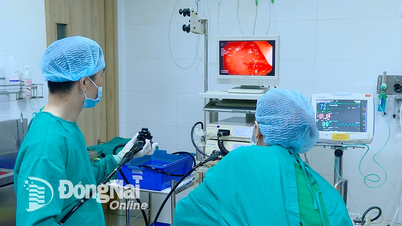|
(Ms. Phuong Nga, residing in Nhon Trach district)
Doctor replied:
Hello!
Please share more information so that I can better understand the disease and treatment options.
Regarding transposition of the great arteries (TGA), this is a congenital heart defect in which the two major arteries of the heart (aorta and pulmonary artery) are switched:
- The aorta (normally connected to the left ventricle) is connected to the right ventricle.
- The pulmonary artery (normally connected to the right ventricle) is connected to the left ventricle.
Transposition of the great arteries disrupts the connection and interaction between the two circulatory loops that flow through the heart and lungs. As a result, the body's tissues are deprived of oxygen, and the child will face dangerous complications or death if not treated promptly.
Nowadays, with the advancement of medicine, transposition of the great arteries can be treated effectively, especially if detected early as in your child's case. The success rate of surgical treatment of TGA is very high, about 90-95% in large and experienced cardiovascular centers. After treatment, most children can develop normally and have a good quality of life.
Treatment for transposition of the great arteries usually involves the following steps. First, there may be postnatal intervention. After the baby is born, the doctor will take measures to maintain temporary blood circulation, such as the Rashkind procedure (balloon atrial septostomy); use the drug Prostaglandin E1 to keep the ductus arteriosus open, helping to increase blood flow to the lungs and increase oxygen in the blood.
Second, your baby may have surgery. This is the main treatment and is usually performed within the first week of life. During the surgery, the surgeon will move the aorta and pulmonary artery back into their proper positions, and repair the blood vessels and heart valves involved. This surgery has a high success rate when performed by experienced pediatric cardiologists.
The important thing now is that you continue to closely monitor your pregnancy at medical facilities with obstetrics and cardiology departments. Doctors will plan the delivery and treatment for your baby immediately after birth. In addition, you should give birth at a hospital with a pediatric cardiology department or near a major cardiovascular center so that your baby can receive timely intervention after birth. Although this is a serious cardiovascular defect, with early detection and proper treatment, your baby has a great chance of recovering and developing normally.
Wish you and your baby good health!
Specialist Doctor 1 Mai Xuan Tam,
Department of Pediatrics, Au Co Hospital
|
Source: https://baodongnai.com.vn/alo--bac-si-oi/202505/phat-hien-thai-nhi-bi-tim-bam-sinh-khi-mang-thai-phai-lam-gi-35633a8/







![[Photo] Top players gather at the 2025 Nhan Dan Newspaper National Table Tennis Championship](https://vphoto.vietnam.vn/thumb/1200x675/vietnam/resource/IMAGE/2025/5/23/9ad5f6f4faf146b08335e5c446edb107)
![[Photo] Anh Hoang - Dinh Duc successfully defended the men's doubles championship of the National Table Tennis Championship of Nhan Dan Newspaper](https://vphoto.vietnam.vn/thumb/1200x675/vietnam/resource/IMAGE/2025/5/23/d6ab3bcac02c49928b38c729d795cac6)


















































































Comment (0)